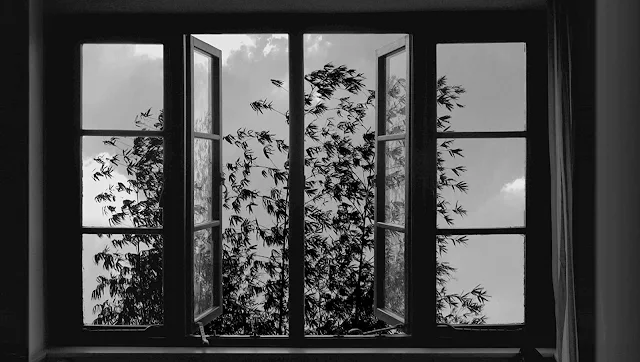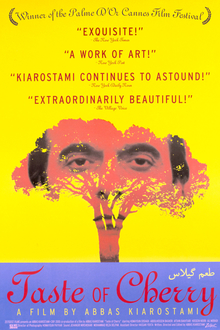 |
| Farhad Kheradmand and Hossein Rezai in Through the Olive Trees |
Through the Olive Trees is the concluding film in what has become known as Abbas Kiarostami's "Koker trilogy," which is made up of the neorealistic Where Is My Friend's House? (1987), the semi-documentary And Life Goes On (1992), and this lyrical, pastoral, slyly comic work. It's possible to impose a variety of shapes on the trilogy as it moves from the simple narrative of the first film, made on the eve of the 1990 earthquake that devastated northern Iran, through the anxious quest for survivors of the cast of the first film that constitutes the middle film, and into a kind of post-disaster healing that centers on both the making of a film and one of its actors' nervous, intense courtship of a young woman, also an actor in the film. Through the Olive Trees also answers a question that was raised but never answered in And Life Goes On: Did the two boys who were the focus of Where Is My Friend's House survive the quake? But like most of the questions the third film deals with, the answer is oblique or obscure to the inattentive. In this case, it's a yes: The boys, Ahmed and Babek Ahmed Poor, appear in this film bringing potted geraniums to the set of the film that's being made in post-quake Koker. Kiarostami doesn't identify them as such, but leaves the recognition to viewers familiar with the first film. In fact, it's best to watch the trilogy as a whole, as Kiarostami manages to move actors and characters around among the three films. In Through the Olive Trees, the actor/character known as Farhad is the same actor, Farhad Kheradmand, who played the director in And Life Goes On. A different actor, Mohamad Ali Keshavarz, plays the director in Through the Olive Trees. Sometimes we don't know whether we're watching actors performing in scenes for the film that's being made or the actual lives of the actors out of character -- in fact, the actors find it hard to separate the two. The third part of the trilogy is linked visually to the first by the zigzag path that people traverse to surmount the steep ridge that separates villages. And Through the Olive Trees links visually with And Life Goes On in that both films conclude with remarkable long-shot long takes in which characters from the film encounter each other at great distances from the camera. Taking the three films together, I think, only binds them into a whole masterwork -- an enigmatic, moving, frustrating, fascinating masterwork.











































